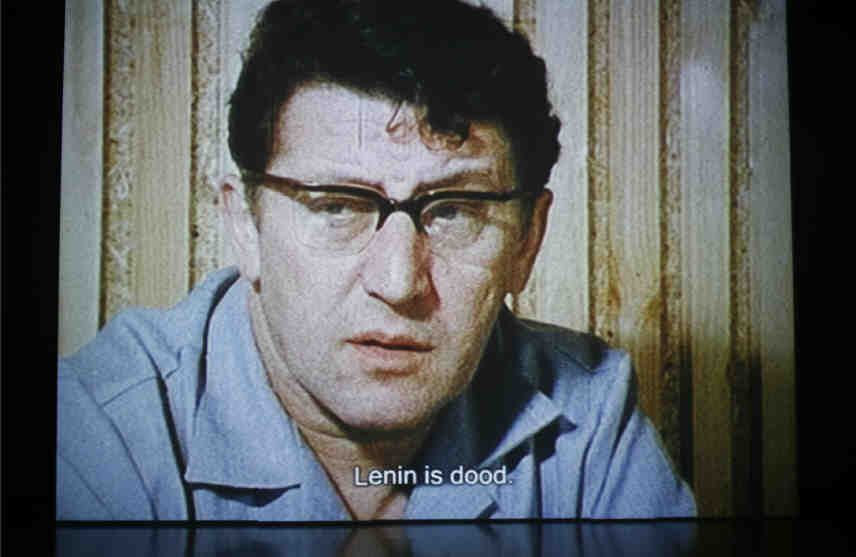The Head
From S E B A S T I E N G O Y

"The Head", probably the most commonly known video work from the Lithuanian artist Deimantas Narkevicius and the first piece of his current solo exhibition at the Van Abbe Museum, is a mere aggregation of found footage, all relating to the Soviet realist sculptor Lev Efimovich Kerbel and the creation of his master piece, a monumental sculptural portrait of Karl Marx formerly placed in Chemnitz, Germany. The first part of the video is an interview of the sculptor in his modest-yet-colourful home, where he calls upon his child memories of soviet History in the making. The following sequences, in wordless black and white, show the artist in his atelier, correcting a scale model of the head, shoots of the future location for the sculpture in Chemnitz and finally, workers building the monument.
Inevitably labelled post-communist artist, Narkevicius could naively be assigned the task of revisiting the history of the Eastern Bloc, only to demonstrate the regime’s shortcomings. "The Head" would epitomize this view: a transparent intervention, the artist vanishing in front of the documentary material, would emphasize its original content and allow the viewer’s a priori conviction regarding the blindness of the communist elite or its coward resignation to deploy fully. Yet in a recent talk[1], Narkevicius claims to have no interest in the role of the artist as historian, let alone that of moralist - the advent it presupposes, namely the end of History, occurred for the video artist long before in the eastern bloc, as the communist meta-narrative reached its stasis.
With this work, the audience is compelled to re-negotiate their innate representation of the Artist and the condition of its production. The viewers are at lost when looking for any difference despite the displacement of this representation to a communist context, which immediately raises suspicion in the capitalist layman of a spurious format, if not of strong propaganda. Yet Kerbel is modest, his artistic intent is the echo of the artist's individual feelings and personal history, and his manual practice, a succession of careful decisions. “If the difference in portraiture between a soviet realist and contemporary artists inclined to comment on consumerism, through a strategy of blunt reproduction, is merely ideological”, seems to ask Narkevicius, “then to what extend the motives of the respective art promoters, the regime and the cultural industry, differ?”
But reducing “the Head” to its critical dimension would dismiss the inner tension of the work, a tension celebrated by Jacques Rancières as consubstantial to the work of art in our current aesthetical regime[2]. His synthetic view is critical of the linear development any dialectic supposes, dismissing the implied necessity of collapse, such as the end of History, in favour of a paradoxical superposition of antagonistic states. In the present case, the contradiction comes from the underlying question of the making: what is left for the artist in the concatenation of found footage all relating to the same subject? After all, the shoots following the initial interview of Kerbel, all in black and white, could already exist as a film, before being ready-made. The intervention of Narkevicius can only be perceived in minimalistic proportions, straining any indication of artistic autonomy with respect to its primary subject matter.
Elements of an answer are to be found in the words of British filmmaker Peter Watkins, interviewed for the piece “The role of a life time”, who admittedly relinquishes all control during the production of a documentary, but the editing. The autonomy of “The Head” could thus exist negatively, in the invisible decisions of Narkevicius, for the work to resist the lures of “becoming life”, to paradoxically preserve its political promise.